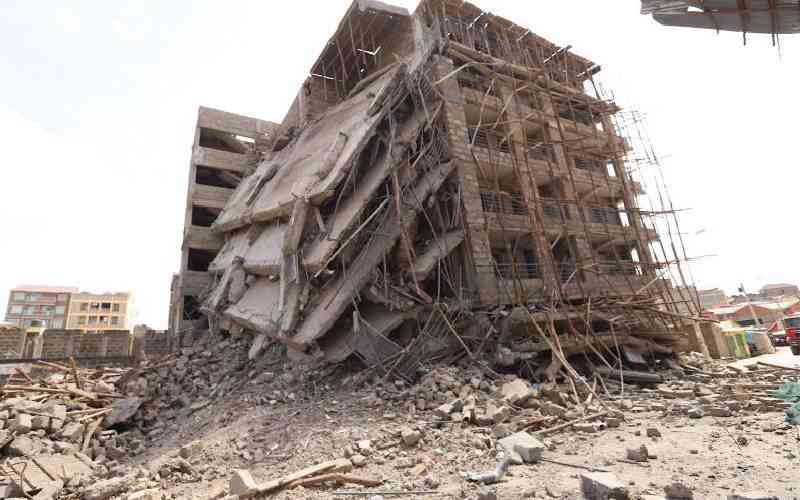An estimated 200 people have lost their lives as a result of buildings collapsing on them in the past five years.
While authorities like the National Construction Authority (NCA) have been accused of having lax control, the organization has been emphasizing its efforts to prevent building collapse.
Approximately 60% of construction projects, according to NCA, are non-compliant. During a recent stakeholder meeting, NCA General Manager of Registration Susan Rutto stated, “It is true that we have experienced a lot of collapses, but we also have robust constructions which are standing.”
She continued, “As an authority, we have been able to inspect more than 26,000 current construction projects in the nation.
Few buildings have collapsed recently, according to Ms. Rutto, and NCA has worked to “totally diminish or eradicate the issue of construction disasters.”
Buildings fall, according to NCA, because of zoning violations and overdevelopment, as developers submit the incorrect construction plans for approval with the hope of receiving a large return on investment.
Bad craftsmanship, dishonest contractors, the use of subpar materials, poor maintenance, failing to conduct a geo-technical analysis, construction overload, and developer avarice are a few other causes of building collapses.
NCA stated that it continually conducted quality checks to prevent building collapses.
According to Rutto, a suspension order is issued when a building is determined to be out of compliance, and a unit to enforce the orders is now being developed.
“When we issue a suspension order, we anticipate that no construction activity will be done until the noncompliance issues are resolved. But despite the suspension orders, some of the developers continue to work on their projects, she claimed.
On the approval of projects, “we are also collaborating with other agencies and counties.”
According to the authorities, construction projects have received a number of suspension orders to date.
“When we take a look at how many quality assurance checks we’ve done so far, 60% of our sites aren’t compliant. Several suspension orders have been issued out of these, and we are checking to make sure that no work is being done on those sites,” said Rutto.
87 structures have collapsed in the past five years, according to data from the National Building Inspectorate (NBI). There have been 200 fatalities and 1,000 injuries.
Sixty-five percent of all the buildings that have been reported to have collapsed were residential, twenty-five percent were commercial, and ten percent were mixed-use developments.
Additionally, 4,000 homes in Kenya were deemed unfit for human habitation during the same time frame. More information from the Kenya National Bureau of Statistics (KNBS) reveals that the performance of the construction sector in 2021 was lower than in 2020, when it experienced nearly 10% increase.
The growth in 2020 was brought on by ongoing government spending on road development.
The Nairobi expressway and the renovation of the Longonot-Malaba metre gauge railway are two examples of significant road building projects that improved the performance of the industry.



